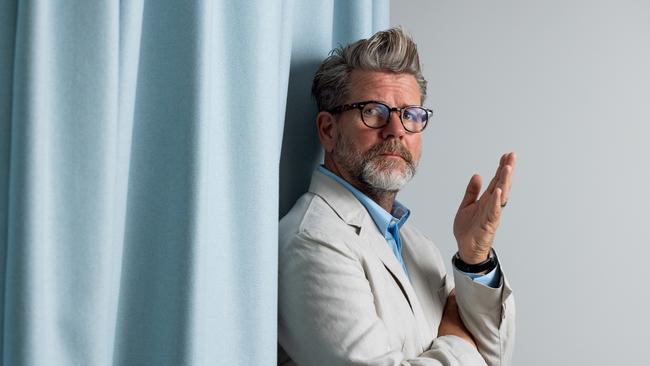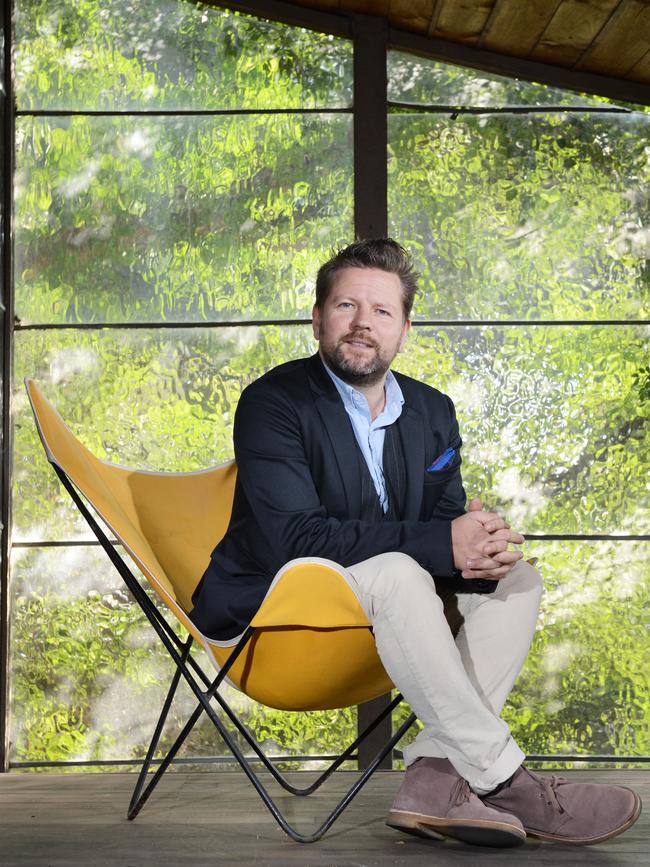Tim Ross on how the Australian Dream of home ownership was forged
He’s the former radio DJ turned authority on all things architecture and design. Now, Tim Ross turns his attention to how home ownership became an enduring national obsession.

Tim, your career as a pundit on design and architecture is your “second act” in a way. For most Australians, you will always be one half of the Merrick and Rosso radio show. Is that a blessing or a curse? I think it’s wonderful. Merrick and I talk about it all the time. People come up to us and talk about things from 15, 20, 25 years ago. The connection you can have when people are driving or listening at home is an extraordinary one. It’s a beautiful bond. And I suppose for Merrick and I, we were like brothers who grew up in a weird, wonderful family.
Now you’re about to tour a live lecture titled “The Australian Dream?” Tell us about it. I’ve been doing history-based talks that are sort of funny-factual shows for a little while now. I did one on motels and another about Australia in the ’80s. For this one, I thought tackling the concept of home ownership in this environment was important – but I wanted to look at it differently, talking not just about housing policy but what our homes mean to us. It explores how we’ve painted ourselves into this corner – why we have an enduring obsession with home ownership – and how decisions made in the late 1940s still stick with us today.

OK so how did we get into this home ownership fever-dream? Back in the 40s the idea was basically you give a man a mower and a mortgage and he won’t become a communist. In the post-war period we needed to populate or perish and that established Australia as the first suburban nation. People came here to get that slice of the Australian dream: the suburban quarter-acre block with your own home on it.
After all this research, have you got the silver bullet to solving our housing affordability crisis? I can’t solve problems about housing affordability with this show but I can tell you the way I see it: the only way out is for government to intervene and create more social housing. Developers won’t do it for us.
What about negative gearing and how it’s fuelled the market? I don’t think people who have taken advantage of negative gearing are the bad guys. Australians have chosen to take advantage of it. It’s there, and they should. But if we created more social and affordable housing, people would have more options.
When it comes to housing affordability, are we too nostalgic for the past? I think it’s nice to roll around with this sort of idea that there was perfect living in the past when everything was supposedly affordable, but the houses were pretty crappy. The house I grew up in, I loved it as a kid, but it had no insulation. You know, I’ve been looking at plans for modular homes from the 1940s and most of them didn’t have a toilet inside.
To prepare for the show, you nosed around a few nice homes. What did you discover? I love going into people’s homes – I can get quite forensic and start walking around and looking at things, but I do have to pull myself up: “Come on mate, don’t be weird.” One home that I visited was one architect Glenn Murcutt created for artist Ken Done. It’s a beautiful house, an extraordinary house but also quite modest. Most people at that time were taking the excesses of the ’80s to the extreme, but that’s not what Ken did.
You did a shift behind the mic for Double J on Christmas Day. Ever tempted to go back to it? I’ve done a little bit of podcasting over the years, but I hadn’t been that interested in doing a regular podcast until [Grand Designs host] Kevin McCloud and I started talking about doing something together. He’s really funny and incredibly bright – he’s great company. People are gonna really like that. I’ve definitely got the Australian voice next to his dulcet tones.
The Australian Dream? tours from February 14



To join the conversation, please log in. Don't have an account? Register
Join the conversation, you are commenting as Logout